|
Forgotten Temples of Kashmir
Photo series Part-9 An effort to preserve and record Hindu cultural and religios heritage of Kashmir PAAPHARAN NAG 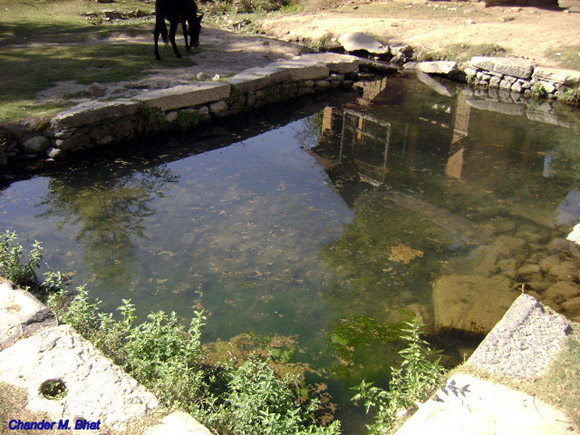
(Paapharan Nag - Place of liberation from all sins.) Exclusive images and report from a remote village in Kashmir provided for Shehjarby Chander M. Bhat |
| Village Salia was well dominated by Kashmiri Pandits before the unfortunate exodus, 93 Kashmiri Pandit families were residing over here. Razdans of this village were well off and were owners of vast landed property. At present there is no Pandit family in the said village. This village is surrounded by Seer Kanilgund, Chandrigam, Brar and Khayar villages. Famous shrine Ashmuqam is 2.5 km away from this village and the village has its own history dated back to the period of Satisar. Pap Haran Nag has its origin to the era of Pandivas. It is held that an Ashwameed Yaga was to be performed by the Maharaja of Inderprestha State and learned Brahmins were required to be summoned for reciting of mantras and puja. In this regard they deputed legendary Bhimsen to Kashmir valley for inviting the learned Kashmiri Pandits for the said purpose. On reaching village Sailia, Bhimsen was tired and hungry. He saw a mud hut near the village and entered it. To his surprise, he saw an old woman wailing and weeping inside the hut. He enquired about the reason of desperation. The old woman told him that there is a demon living in a cave near the village and he has perpetuated a reign of terror in the area. He would take one person each day as his diet. The day of arrival of Bhimsen was the day when the poor lady’s son had to be taken by the demon for his diet. Bhimsen consoled the lady and assured her about the safety of her dear son. He offered himself to be presented to the demon and asked the old lady to prepare food for the demon. He reached the cave on the assigned day where the demon was living. Demon came out to receive the person and the food. Legendary Bhimsen fought with the demon and killed him. Whole village was relieved of the terror unleashed by the demon. While assigning the task of bringing the learned Kashmiri Pandits for the Yagna, Bhimsen was asked not to do any sin during the course of journey. Bhimsen started to repent and in the melee he went into a sleep in the open ground. A divine voice came from the sky directing him to have a bath in a spring which was to emerge at the place he was sleeping. Next day a beautiful spring emerged at the said place and Bhimsen took a bath in the spring and thus was relieved of the sin which was travelling in his mind. Thereafter Bhimsen took the learnt Kashmir Pandit Brahmins to Inderprastha. The day of emerging of the holy spring was Anant Chaturdashi and the day is celebrated by all the Kashmiri Pandits especially the locals by performing Yagna and puja at this shrine besides having a holy dip in the sacred spring. From that day Ashud Shakulapakch Chaturdashi is celebrated by a number of Kashmiri Pandits at Pap Haran Nag shrine. It is said that the King of Kashmir Maharana Pratap Singh also used to visit this shrine once in a year during his regime for a dip in the holy spring. It has been observed that a shadow of green colour would always appear in this sacred spring which was an indication that another spring is hidden near it as Gupt Ganga. It is said that an old lion was visiting this holy spring on every Thursday during the nigh. There was a white coloured Shivling in the middle of this spring which was not visible to the lay man but the same was noticed by the elevated souls only. The spring is attractive at every hour, in every season. Whosoever sits in its side in a devotional prayer gets entranced and spiritually transformed. There was a Chinar tree and some walnut trees in the complex of this shrine but the same are missing at present. A boundary wall of the shrine complex was constructed by the locals in the year 1968. No boundary wall exists at present. In dark nights, under the shade of the Chinar, the sacred places present an atmosphere where one becomes one with God. And in moonlit nights, devotees experienced something mystic all over in the shrine of Pap Haran Nag. Washing of clothes, utensils etc was strictly prohibited in the said spring. It is said that once a Muslim lady tried to wash her utensils and clothes in the spring and despite being warned by one Pandit Shivji Koul, she continued with the work. Resultantly she had her house gutted in a fire accident and nothing remained for her survival. Swami Heam Raj Ji practiced sadhana at this place for 18 long years [13 years at Kaarkut Nag and 5 years at Pap Haran Nag] and thereafter he was directed by Mata Jawalaji [in a dream] to come to Khrew and perform his sadhana over there [after the exodus he shifted to Sudhmahadev near Chenani, Udhampur]. The place earned recognition for being the place of celebration of Deepavali, Janamashtami, Ramnavmi and Shivratri. On Janam Ashtami a big procession was taken out from this Shrine by the Pandits of Seer Kanil Gund, Sligam, Loketpur, Ganeshpur, Khaya, Panzmulla and Chandrigam. After mass exodus of Pandits from the valley, the shrine has remained without any care and started to wither from its pristine glory. The Pap Haran Nag has its banks broken and water is aimlessly coming out from the spring without any proper outlet. Simultaneously the condition of the Shiva Temple in the near by has also brought into shambles. Even state authorities have turned a blind eye towards its plight. The land of 7 kanals is now reduced to only 2 kanals by illegal encroachment. Dharamshala of this shrine is also in a pathetic condition as hooligans have desecrated and vandalized it. The land around the Pap Haran Nag has become a grazing ground for the stray cattle. The shrine which was once a centre of attraction for devoted Kashmiri Pandits has now become a place with a pathetic look. Notes and References 1. Encyclopedia: Kashmiri Pandit Culture and Heritage by C.L.Kaul, published by Ansh Publications, New Delhi. 2. Place Names in Kashmir by B.K. Raina and S.L.Sadhu, published by Bharatiya Vidya Bhavan, Mumbai and Indira Gandhi National Centre for the Arts, New Delhi. 3. Interview dated 18th April 2010 with Sh. Kenwal Krishan Razdan resident of Village Sailia presently residing at Bantlab, Jammu. |
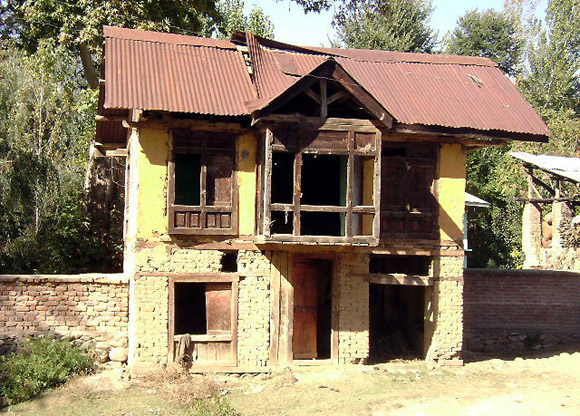
Present view of Dharamshala at Paapharan Nag. Place of rest wating for a doom. |
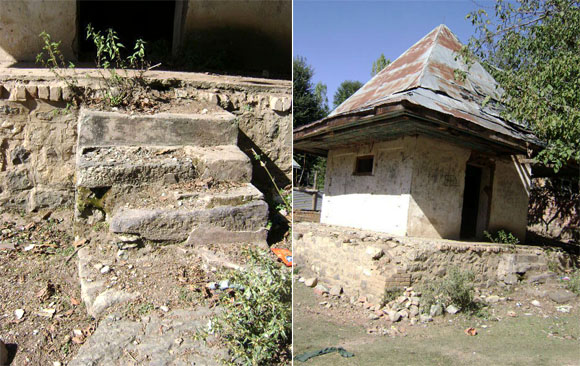
Steps to Shiv Mandir. Steps of salvation and on right Shiv Temple at Paapharan Nag. Time and tide destroys everything in their way |

a Wrinkles of time visible over here |
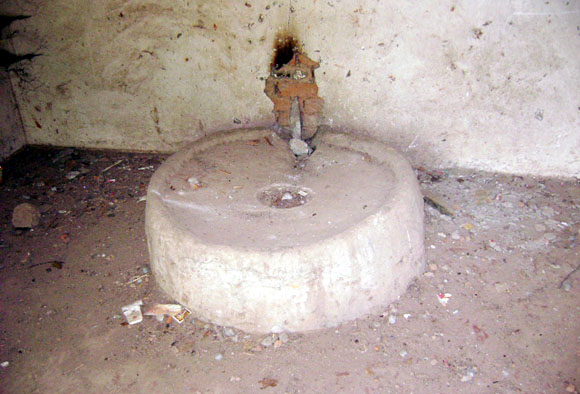
Shiva has attained the formation of shoonya over here |
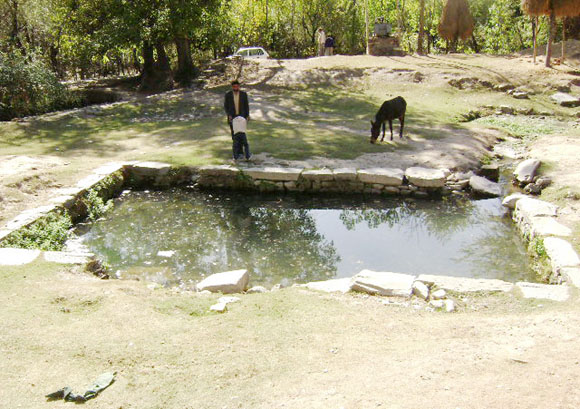
Even monestors get relief from their sins at this place |
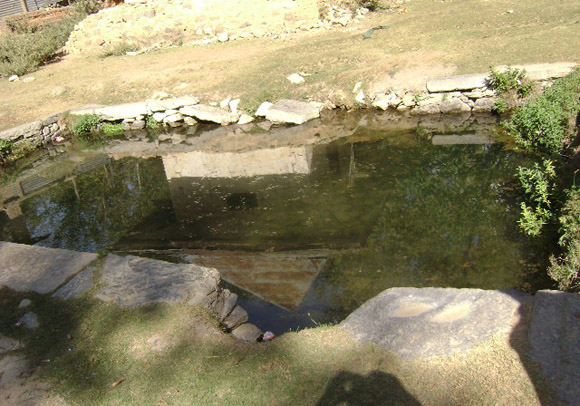
My noble waters cannot be ruined like my body |
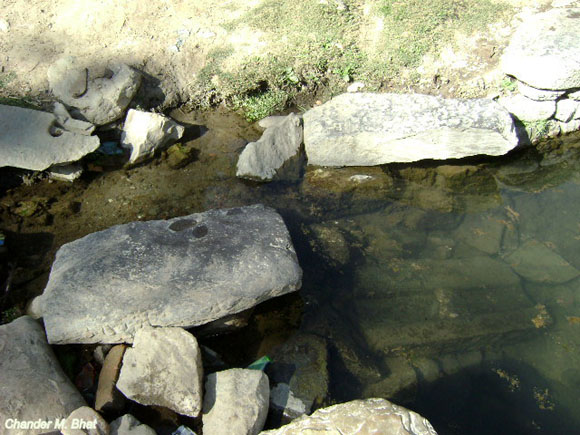
aOutlet of Paapharan Nag. No body is there to wash the sacred thread over here |
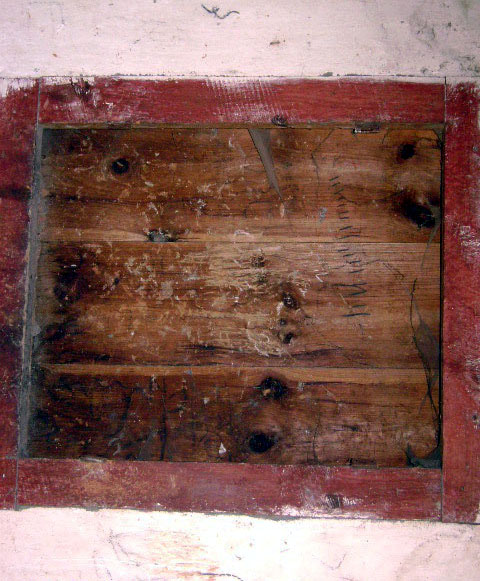
Almirah in Shiva Temple faceless now |

Even children wonder over its goneby youth |
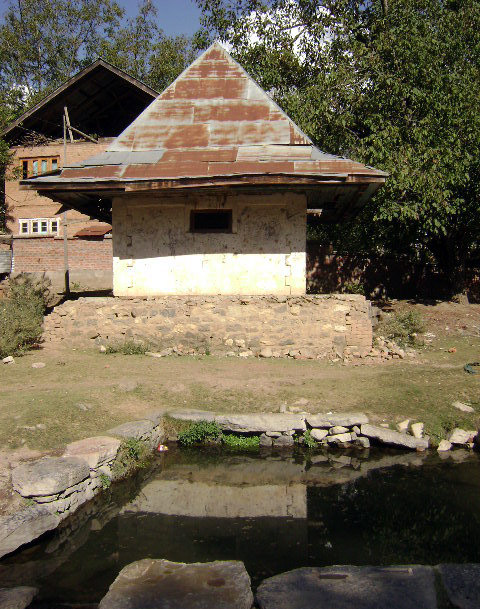
The eyes of nature both looking helplessly to the sky |
Saturday, June 9, 2012
PAAPHARAN NAG KASHMIR
Subscribe to:
Post Comments (Atom)


No comments:
Post a Comment